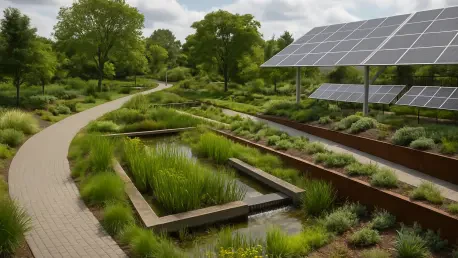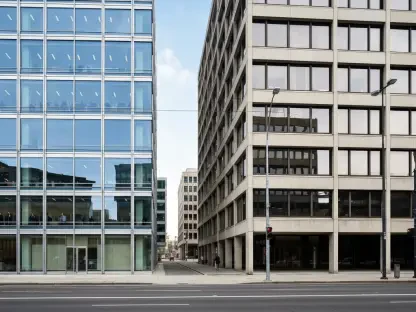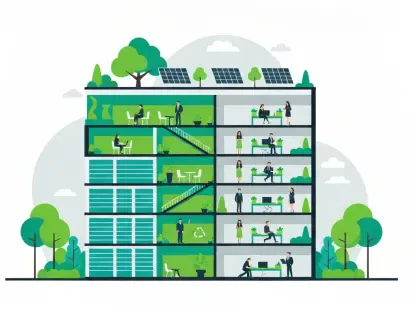The Australian Institute of Landscape Architects (AILA) is preparing to host its much-anticipated National Awards on October 21 in Lutruwita/Tasmania, an event that annually celebrates the forefront of landscape architecture across Australia. This prestigious ceremony honors exceptional projects and practitioners who redefine design, champion innovation, and create meaningful community impact through their work. Drawn from state-level award winners earlier this year, the shortlist features a captivating array of initiatives that shape both urban and natural environments. From revitalized city squares to sustainable rural landscapes, the nominees reflect the diverse challenges and creative solutions within the field. This gathering not only showcases talent but also underscores the vital role of landscape architecture in addressing contemporary issues like climate change and social connectivity. As the event approaches, attention turns to the standout contenders and the transformative projects vying for recognition in this esteemed competition.
Showcasing the Leading Contenders
A broad spectrum of talent emerges in the lineup for the AILA National Awards, with projects spanning categories such as Civic Landscape, Climate Positive Design, Community Contribution, Cultural Heritage, Gardens, Health and Education, Regional Achievement, and Urban Design. Victoria takes the lead with over 30 nominations, showcasing a strong hub of innovation, while Queensland and New South Wales follow closely with more than 25 projects each. This geographic diversity highlights the widespread creativity and dedication to enhancing spaces across Australia’s urban and regional areas. Whether it’s a sprawling metropolitan park or a quiet countryside retreat, the nominated works address a range of environmental and societal needs, demonstrating the profession’s adaptability and reach. The variety in scale and context among these entries paints a vivid picture of how landscape architects are shaping the nation’s surroundings with vision and purpose.
Renowned design firms like ASPECT Studios, Hassell Studio, Tract, REALMstudios, and TCL stand out with multiple nominations, affirming their consistent excellence and influence in the industry. Their projects often set benchmarks for creativity and functionality, pushing the boundaries of what landscapes can achieve. Alongside these industry leaders, local councils and government entities contribute significantly, collaborating to develop public spaces that enhance everyday life for communities. This synergy between private expertise and public commitment ensures that designs are not only aesthetically pleasing but also deeply aligned with the practical needs of residents. Such partnerships exemplify a collective effort to transform environments into spaces that resonate with users, balancing innovative ideas with grounded, community-focused outcomes. The collaborative spirit evident in these nominations signals a robust framework for future advancements in the field.
Exploring Central Themes in Nominated Works
Sustainability and resilience against climate challenges emerge as dominant themes among the nominated projects, particularly in the Climate Positive Design category. Initiatives like Breakout Creek / Purrana Pari – Stage 3 in South Australia and Wagonga Inlet Living Foreshore in New South Wales exemplify efforts to restore natural ecosystems, manage water resources effectively, and reduce urban heat through strategic design. These projects confront pressing global concerns by integrating solutions that adapt to environmental shifts while promoting long-term ecological health. By prioritizing green infrastructure and thoughtful planning, they position landscape architects as critical contributors to combating climate change. The focus on sustainability reflects a broader movement within the profession to create spaces that endure and thrive amidst evolving environmental pressures, setting a standard for future endeavors.
Equally compelling is the emphasis on community engagement and cultural significance woven into many of the shortlisted designs. Projects such as 24 Carrot Gardens in Tasmania and Port Noarlunga South Memorial Seat in South Australia highlight a commitment to inclusivity, education, and the preservation of historical narratives. Many incorporate Indigenous perspectives, embedding a deep respect for Country into modern landscapes. These spaces serve as more than just physical locations; they foster social connections, provide educational opportunities, and honor Australia’s diverse heritage. By designing environments that cater to varied populations and celebrate cultural roots, landscape architects contribute to stronger, more cohesive communities. This trend underscores the profound social impact that well-crafted public spaces can have, ensuring they remain relevant and cherished by generations to come.
Emerging Patterns and Wider Significance
A striking pattern among the nominated projects is the integration of natural elements into urban settings, reflecting a shared belief that landscape architecture should harmonize built and natural environments. Designs like Green Our Roof and Central Park All-Abilities Playground, both in Victoria, bring greenery into densely populated areas, enhancing mental well-being, supporting biodiversity, and mitigating urban heat. This biophilic approach prioritizes human connection to nature, transforming cityscapes into healthier, more livable spaces. Such initiatives reveal a growing recognition of the need to counteract the effects of urbanization by embedding natural systems within concrete landscapes. As cities continue to expand, these projects offer a blueprint for balancing growth with ecological mindfulness, ensuring urban areas remain vibrant and sustainable.
Another notable trend is the rise of multifunctional spaces and collaborative efforts in design execution. Projects like Cusack Lane Streetscape Upgrade in Queensland and the Munarra Centre for Regional Excellence in Victoria result from partnerships with local governments and stakeholders, ensuring alignment with community priorities. These spaces often serve multiple purposes—recreation, education, cultural expression, and environmental care—demonstrating the versatility of landscape architecture in addressing complex challenges. The collaborative nature of these works ensures that designs are both innovative and practical, meeting the specific needs of the areas they inhabit. This focus on multi-use environments and joint efforts highlights the profession’s capacity to create impactful solutions that resonate on multiple levels, paving the way for more integrated and responsive urban planning in the years ahead.
Reflecting on Lasting Contributions
Looking back, the AILA National Awards shortlist revealed a landscape architecture field that stood firmly at the intersection of creativity and responsibility. The nominated projects tackled urgent issues like climate adaptation, urbanization, and social equity with remarkable ingenuity. They demonstrated that well-designed spaces did more than enhance aesthetics; they supported local economies, improved environmental health, and strengthened community bonds through thoughtful integration of diverse needs.
As the ceremony concluded, it became clear that the legacy of these projects would inspire ongoing innovation. Moving forward, the challenge lies in scaling these ideas to address broader regional and national needs. Stakeholders and professionals alike are encouraged to build on these achievements, fostering collaborations that prioritize sustainability and inclusivity. By investing in such visionary designs, Australia can continue to cultivate environments that not only meet present demands but also anticipate future challenges with resilience and grace.









